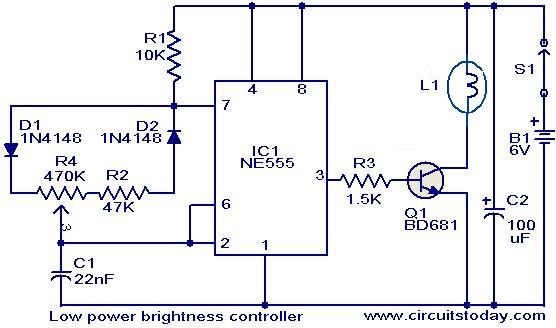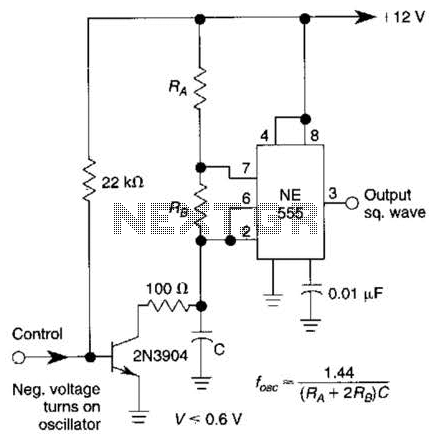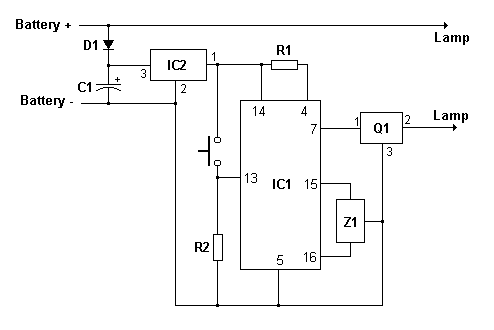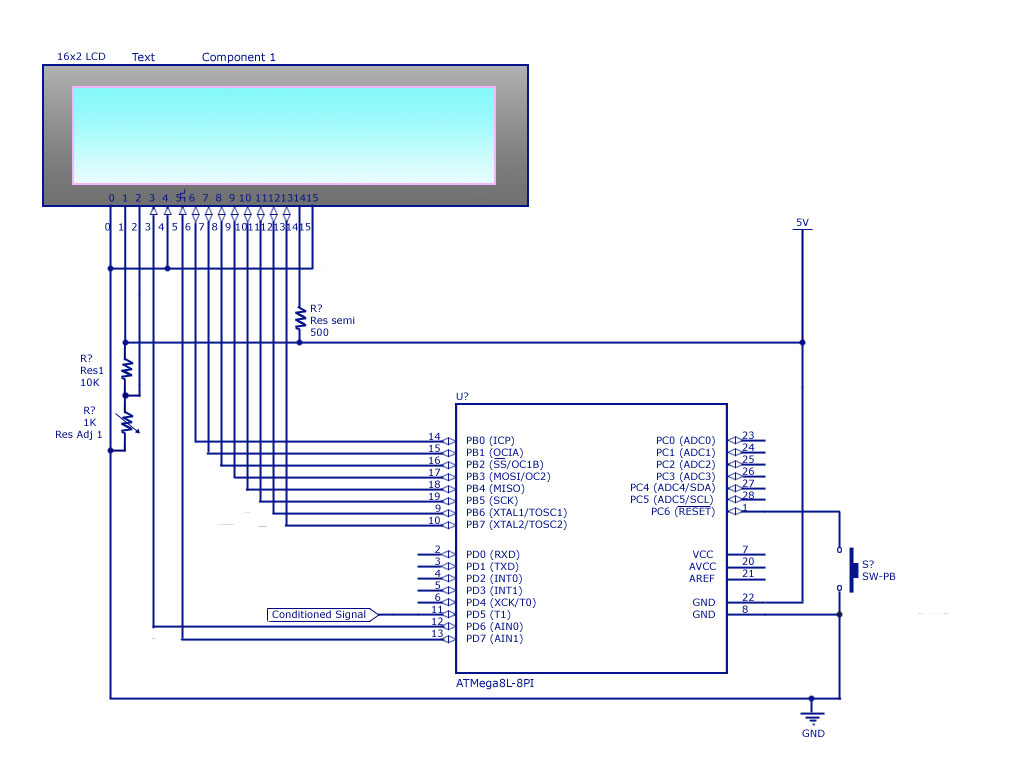
WS157 or WS106 low power micro switching power supply circuit
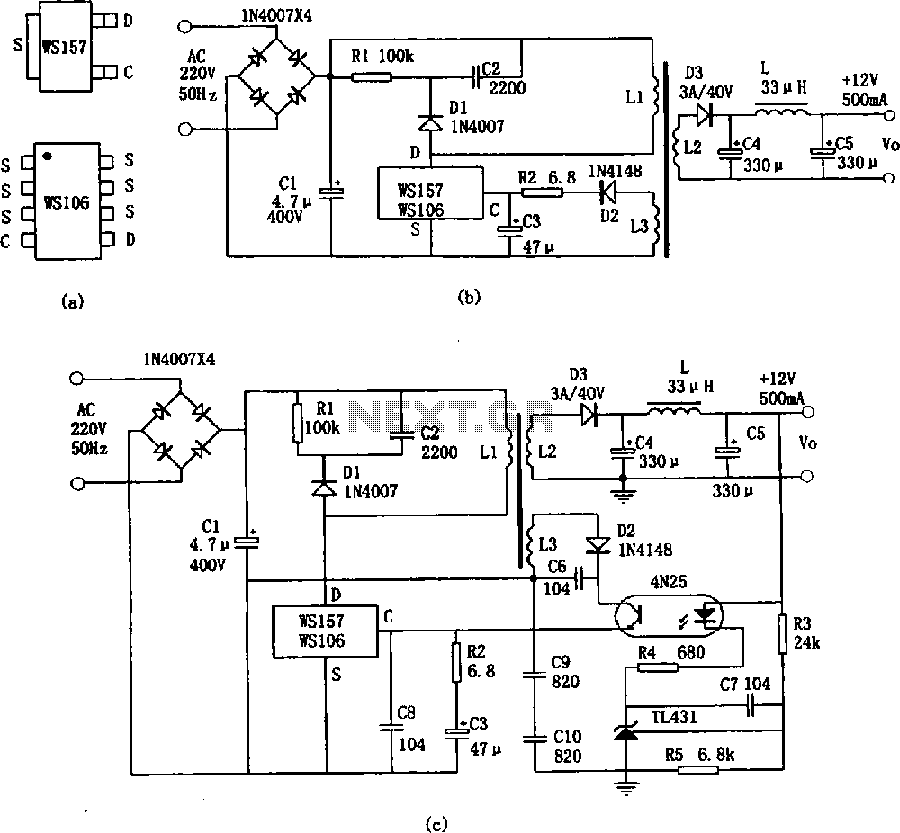
The WS157 or WS106 is a low-power miniature switching power supply that has been developed in recent years. It functions as a regulated switching power supply control device, featuring integrated internal control circuitry and power switches on a single chip. The device utilizes PWM control and includes various protective features such as overcurrent and overheating detection. To operate correctly, it requires connection to a suitable switching transformer and a few additional components. This power supply is designed to convert AC mains voltage (220V) into low-voltage direct current, offering a compact size that simplifies implementation. The WS157 has a power output of 18W, while the WS106 has a power output of 12W.
The WS157 and WS106 switching power supplies represent advanced solutions for low-power applications, effectively combining efficiency and compact design. The integrated design minimizes the number of external components required, which not only reduces assembly time but also enhances reliability. The PWM (Pulse Width Modulation) control mechanism ensures stable output voltage, which is critical for sensitive electronic devices.
For implementation, both the WS157 and WS106 require a compatible switching transformer that is specifically designed to handle the input and output voltage requirements. The external components typically include filtering capacitors, input protection diodes, and feedback resistors to stabilize the output voltage. The power supply's ability to connect directly to the 220V AC mains allows for straightforward integration into various systems without the need for complex power conditioning.
The overcurrent protection feature safeguards against excessive current draw, which could damage the power supply or connected devices. Similarly, the overheating protection function ensures that the unit operates within safe temperature limits, thereby prolonging its lifespan and maintaining performance integrity. The compact dimensions of these power supplies make them ideal for applications where space is at a premium, such as in portable electronics, consumer appliances, and industrial equipment.
Overall, the WS157 and WS106 provide efficient, reliable, and space-saving solutions for converting AC power to low-voltage DC, making them suitable for a wide range of electronic applications.Shown for the WS157 or WS106 with low power miniature switching power supply. WS157 or WS106 is newly developed in recent years a regulated switching power supply control device, the internal control circuitry and power switches integrated on the same chip, with PWM control, a variety of detection overcurrent overheating protection function, external only It must be connected to a suitable switching transformer and a few components to work properly. It is made with the characteristics of the power supply directly to the AC mains (220V) is converted into low-voltage direct current, and small size, making simple.
WS157 power of 18W, WS106 power is 12W.
The WS157 and WS106 switching power supplies represent advanced solutions for low-power applications, effectively combining efficiency and compact design. The integrated design minimizes the number of external components required, which not only reduces assembly time but also enhances reliability. The PWM (Pulse Width Modulation) control mechanism ensures stable output voltage, which is critical for sensitive electronic devices.
For implementation, both the WS157 and WS106 require a compatible switching transformer that is specifically designed to handle the input and output voltage requirements. The external components typically include filtering capacitors, input protection diodes, and feedback resistors to stabilize the output voltage. The power supply's ability to connect directly to the 220V AC mains allows for straightforward integration into various systems without the need for complex power conditioning.
The overcurrent protection feature safeguards against excessive current draw, which could damage the power supply or connected devices. Similarly, the overheating protection function ensures that the unit operates within safe temperature limits, thereby prolonging its lifespan and maintaining performance integrity. The compact dimensions of these power supplies make them ideal for applications where space is at a premium, such as in portable electronics, consumer appliances, and industrial equipment.
Overall, the WS157 and WS106 provide efficient, reliable, and space-saving solutions for converting AC power to low-voltage DC, making them suitable for a wide range of electronic applications.Shown for the WS157 or WS106 with low power miniature switching power supply. WS157 or WS106 is newly developed in recent years a regulated switching power supply control device, the internal control circuitry and power switches integrated on the same chip, with PWM control, a variety of detection overcurrent overheating protection function, external only It must be connected to a suitable switching transformer and a few components to work properly. It is made with the characteristics of the power supply directly to the AC mains (220V) is converted into low-voltage direct current, and small size, making simple.
WS157 power of 18W, WS106 power is 12W.

